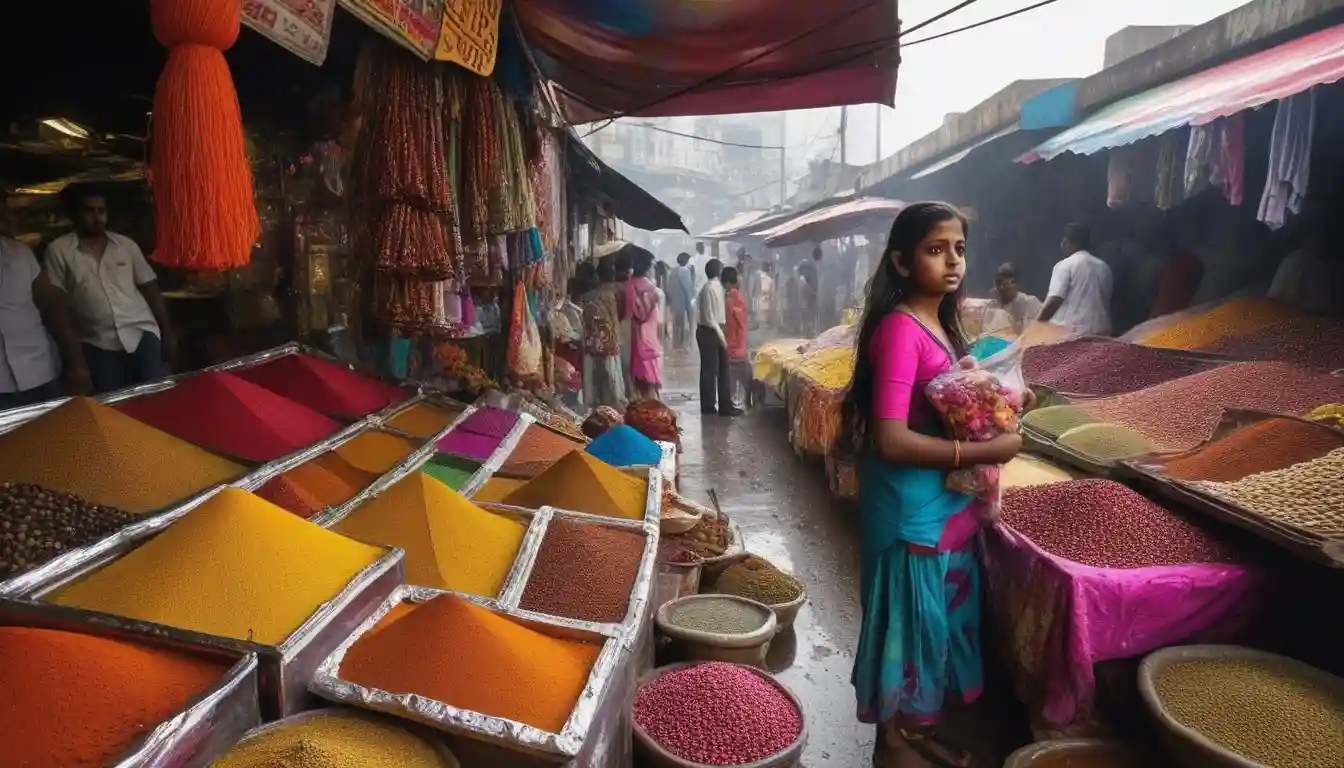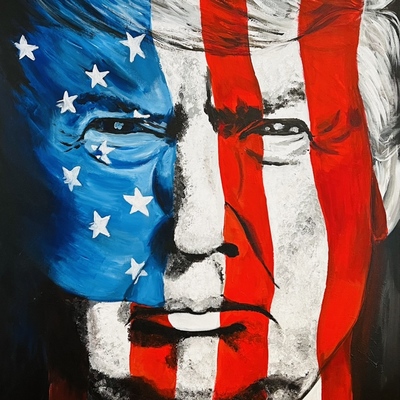
Trump Imposes 25% Tariffs on India Amid Trade and Geopolitical Tensions
Trump’s 25% Tariffs on India: A Trade War Ignites Amid Geopolitical Tensions
U.S. President Donald Trump has imposed a 25% tariff on all goods imported from India, effective August 1, 2025. Unveiled via Trump’s Truth Social platform and reinforced through press briefings, the decision—coupled with an unspecified penalty tied to India’s Russian ties—marks a dramatic escalation in U.S.–India relations. With nearly $90 billion in annual trade at stake, the tariffs threaten industries from Surat’s diamond cutters to Hyderabad’s pharmaceutical labs, while signaling a broader geopolitical reprimand. As the clock ticks toward implementation, the world braces for a potential unraveling of economic and strategic bonds between two uneasy allies.

A Fragile Alliance Tested: The Stakes of Trade and Power
The U.S. and India have long danced a delicate tango, blending strategic partnership with persistent trade friction. In 2024, India—now the fifth-largest economy—exported $87 billion in goods to the U.S., from textiles to technology, while absorbing a fraction of American exports in return. The resulting $45.7 billion trade deficit has gnawed at Washington, amplified by India’s 12% trade-weighted average tariff—a stark contrast to the U.S.’s 2.2%. Months of negotiations aimed at narrowing this gap, particularly over U.S. agricultural and dairy access, faltered as India resisted sweeping concessions. Trump’s August 1 deadline loomed, and with no deal in sight, the tariffs emerged as a blunt instrument of pressure.
Geopolitics adds another layer. India’s refusal to abandon Russian oil and military hardware, despite Western efforts to isolate Moscow over Ukraine, has irked the Trump administration. The tariffs’ additional “penalty” for these purchases underscores a strategic subtext: economic leverage as a tool to realign India’s global stance. Yet, this gambit risks pushing New Delhi closer to Beijing and Moscow, threatening the cohesion of the Quad alliance—U.S., India, Japan, and Australia.
Shock and Silence: The Announcement’s Ripple Effect
Trump’s declaration was as sudden as it was sweeping. “India will therefore be paying a tariff of 25%, plus a penalty for the above, starting on August first,” he posted on Truth Social, adding, “while India is our friend, we have, over the years, done relatively little business with them because their tariffs are far too high.” The lack of prior warning jolted markets and policymakers alike. India’s commerce ministry has remained silent, leaving a vacuum filled by opposition voices decrying the move as “damaging” and “threatening” to Indian industry.
Trade experts wasted no time sounding alarms. “This will hit Indian exports hard—textiles, pharmaceuticals, technology products,” one analyst noted anonymously. “The U.S. is India’s biggest market, and there’s no quick pivot.” In Surat, a diamond exporter lamented, “We’re priced out overnight—years of recovery undone.” In Hyderabad, a pharma manager echoed the sentiment: “The U.S. relies on our generics. This hurts them too.” Across the Atlantic, a New York importer sighed, “We’ll look elsewhere, but it’s chaos.”
Dollars and Deficits: The Economic Fallout Unfolds
The numbers paint a stark picture. India’s $87 billion in U.S. exports—led by apparel, pharma APIs, gems, and specialty chemicals—now face a 25% surcharge. With India’s tariffs averaging 12% against the U.S.’s 2.2%, Trump’s “reciprocal” logic aims to level the playing field. Yet, the immediate cost falls on American consumers and businesses. Importers of Indian goods will likely raise prices, squeezing margins in a U.S. economy already wary of inflation.
Supply chains, too, stand to fracture. “Companies will scramble for alternatives—Vietnam, Bangladesh—but it’s not instant,” an expert observed. The $45.7 billion trade deficit, a perennial Trump grievance, may shrink, but at what cost? Retaliation looms as a near certainty, with India poised to target U.S. agricultural exports like soy and almonds, or tech giants reliant on Indian markets.
Beyond the Balance Sheet: A Geopolitical Reckoning
The tariffs transcend economics, doubling as a shot across India’s bow for its Russian dalliance. By tying the penalty to energy and arms purchases, Trump seeks to punish strategic divergence. Yet, this could backfire spectacularly. “India might lean harder into Russia and China,” one trade specialist warned. “Beijing’s already circling with trade offers.” The Quad, a linchpin of U.S. Indo-Pacific strategy, could weaken if India perceives the tariffs as betrayal.
Late August trade talks now hang in limbo. “This poisons the well,” an analyst said. “Negotiations might stall indefinitely.” Meanwhile, India may turn to the WTO, challenging the tariffs as a violation of global trade norms—a process that could drag into 2026.
Markets on Edge: An Investor’s Guide to the Chaos
For traders, the tariffs spell volatility. The rupee slid past 87 against the dollar, prompting Reserve Bank of India intervention, while Indian export stocks—textiles, pharma—took a beating. Analysts suggest short-term pain could deepen. “Export-heavy sectors will underperform,” one noted. “Think apparel margins dropping 300–500 basis points.” Hedging via USD/INR longs or shorting Indian ETFs like INDA may cushion losses, while domestic Indian cyclicals offer a safer haven.
A swift deal by November 2025 could reverse the tide, analysts say, cutting tariffs to 10% or less. But the base case—40% likelihood—is a stalemate stretching into 2026, with India retaliating and supply chains shifting to Vietnam or Malaysia. “Monitor U.S. consumer price spikes and Indian export data,” an expert advised. “That’s your signal.” Investment Thesis
| Category | Details |
|---|---|
| Overview | Trump’s 25% tariff on India targets $87bn imports (apparel, pharma, gems, chemicals). Not as severe as 2018 China shock but will pressure margins and force portfolio adjustments. Base case (40%): extended stalemate until 1H-2026. |
| Macro & Trade Impact | - Targets $45.7bn U.S. deficit with India. - India’s high farm tariffs (39% vs. U.S. 5%) fuel "protectionist" narrative. - Political cover for Russian energy ties, but core motive is trade leverage. |
| Market Reaction | - Rupee weakens (USD/INR >87), RBI intervenes. - Gift Nifty down 0.7%, offshore holders lose ~₹400bn. - IT ADRs (INFY, WIPRO) drop; domestic cyclicals stable. |
| Sectoral Impact | - Textiles (High): Margins hit 300-500bps; shift to Vietnam/Bangladesh (long VNM, short INDA). - Pharma (Sticky): U.S. wholesalers absorb costs; Indian firms lose pricing power. - Gems (Acute): Shift to Dubai; avoid Indian jewelers. - IT (Indirect): Buy weakness (INFY/TCS); contracts FX-denominated. - Chemicals (Moderate): Dual-sourcing from Malaysia/China. - Auto (Low): Minimal risk (U.S. supply-chain share <2%). |
| Scenarios (12-month) | - Stalemate (40%): Hold USD/INR longs, underweight exporters. - Quick Deal (25%): Rotate into INFY, textiles. - Escalation (25%): Short QCOM, hedge ag stocks. - WTO Resolution (10%): Long INDA, fade USD rally. |
| Tactical Plays | - FX: Long USD/INR NDFs. - Equities: Short INDA/long VNM. - Rates: Pay India 5Y OIS vs. receive U.S. 5Y. - Commodities: Short cotton, long Brent. - Options: Buy INDA puts (Dec ’25 $50). |
| Strategic Implications | - Supply chains: Diversify from India (Vietnam/Bangladesh capacity tight). - FDI: India’s "China+1" appeal weakens (IRR hurdles rise). - Geopolitics: Risk of India leaning closer to China/Russia. |
| Forward View | Tariff is blunt; India’s real leverage is services/supply-chain optionality. Expect partial rollback by 2026 midterms due to U.S. business-lobby pressure. Watch for Indian retaliation (ethanol/almonds). |
Disclaimer: This is not investment advice. Past performance does not guarantee future results. Consult a financial advisor for tailored strategies.
A High-Wire Act With No Net
Trump’s tariffs are a high-stakes bet—leverage for concessions, punishment for Russia ties, and red meat for his base. Yet, the collateral damage spans continents: higher U.S. prices, Indian job losses, and a frayed alliance. India’s next move—retaliation or negotiation—will shape the outcome. For now, a world of traders, diplomats, and workers watches, breathless, as the August 1 deadline nears.